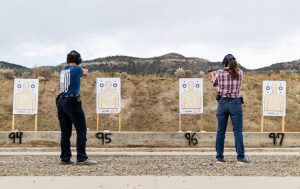Mark Cole
William Floyd of New York grew up in relative affluence and was well on his way to receiving a sound education to prepare him for life when his father died.
The boy became a man rapidly and took up the challenge of managing his family’s business. Civic responsibilities naturally followed, including election to the Continental Congress. While in Philadelphia during the Second Continental Congress, William Floyd unhesitatingly signed the Declaration of Independence, even though the New York colonial government was controlled by enemies of independence.
The first major battle of the war for American independence was the Battle of Long Island, in September of 1776. It was a decisive British victory and resulted in the occupation of Long Island and then New York City for the duration of the war.
Unfortunately for William Floyd and his family, British occupation meant that they had to abandon their beloved Long Island ancestral home, founded in 1680 by Floyd’s immigrant grandfather.
His wife Hannah and three children fled to Middletown, Connecticut. A few years later, she died there, in exile, in 1781, having never seen her home again. She is buried in a small cemetery, in a grave marked by only a modest headstone which reads simply, “Mrs. Hannah Floyd.”
The Floyd home was used throughout the war as barracks for British troops. Floyd’s trees were cut down, his fields stripped, and his home damaged. And obviously the estate had produced no income for Floyd for seven years. Not until 1783 was William Floyd able to set foot on his land again.
In the Revolution, he lost his wife and much of his fortune. But he kept his sacred honor.
Through his military service during the Revolution, Floyd obtained the rank of Major General in the state militia. After the war, from time to time, William Floyd served in Congress and the New York Senate, and in that body he strongly supported ratification of the United States Constitution. He re-married and became interested in western New York.
So at the age of 69 – when most men would have long lost most of their ambition – Floyd headed out and moved to Westernville, New York. There, he remained active in politics, serving on numerous occasions as a Presidential elector. He lived eighteen more happy, productive years, dying in 1821 at the age of 87. General Floyd’s home is today an historical landmark, and many of his descendants still live in the area. A grandson, John Gelston Floyd, represented Long Island in Congress in the mid-nineteenth century.
Check out Mark’s book:
Lives, Fortunes, Sacred Honor: The Men Who Signed the Declaration of Independence













